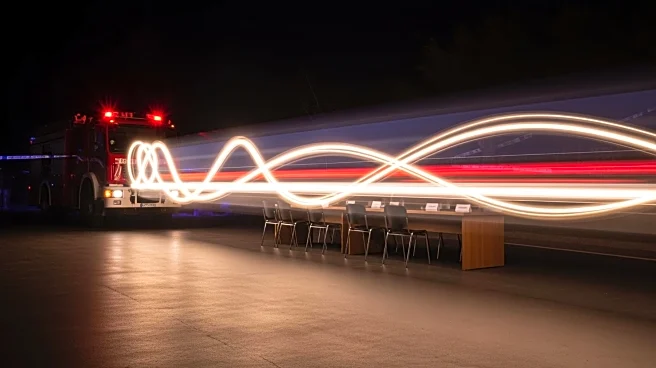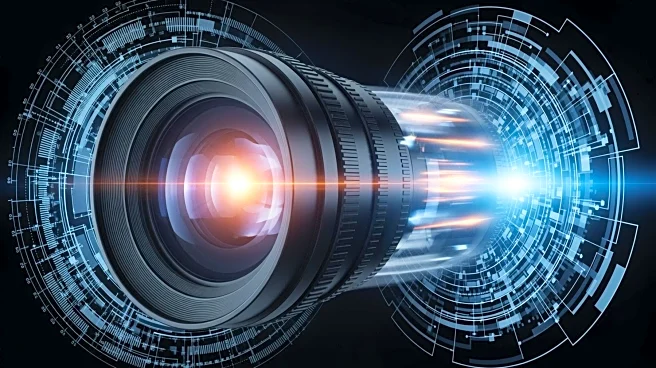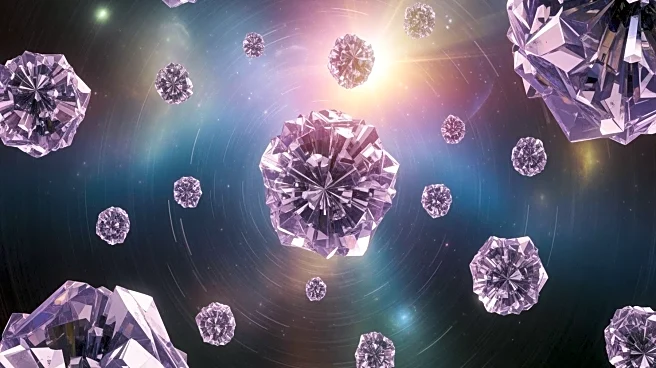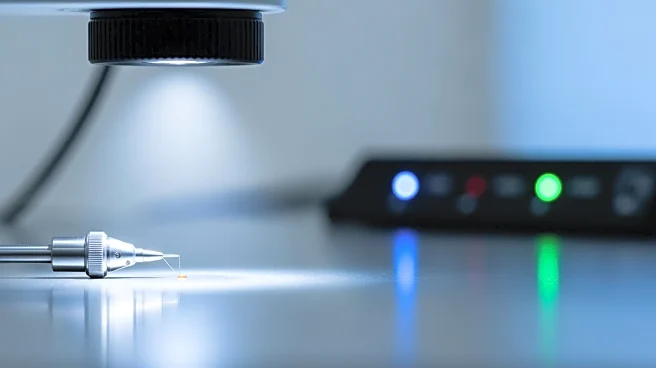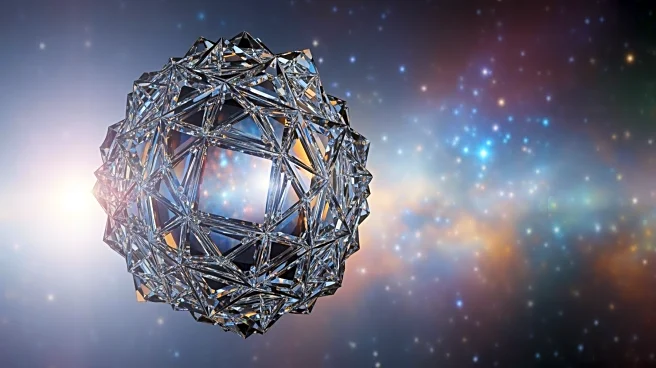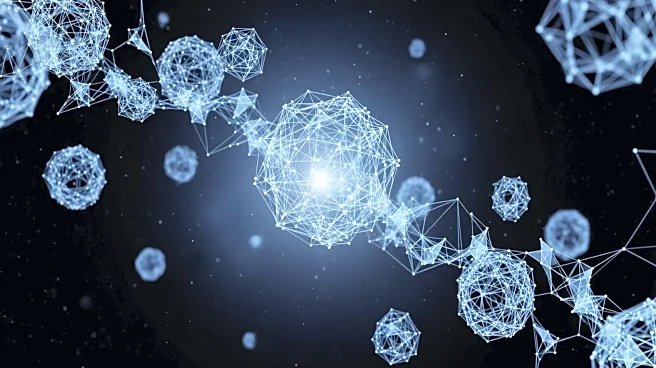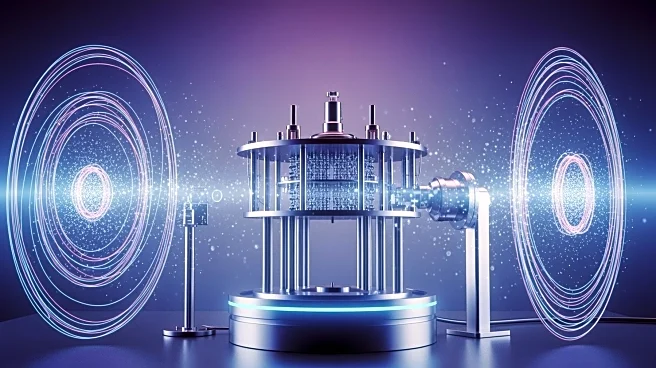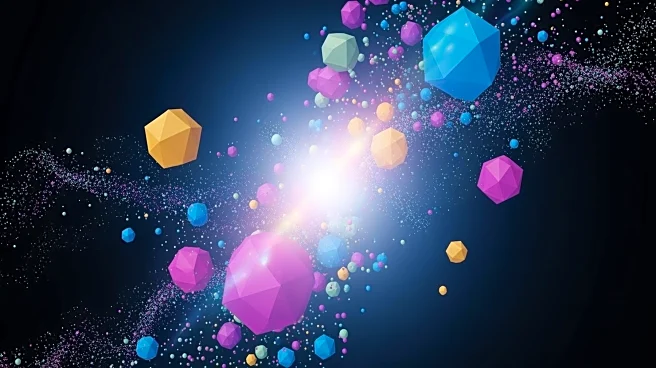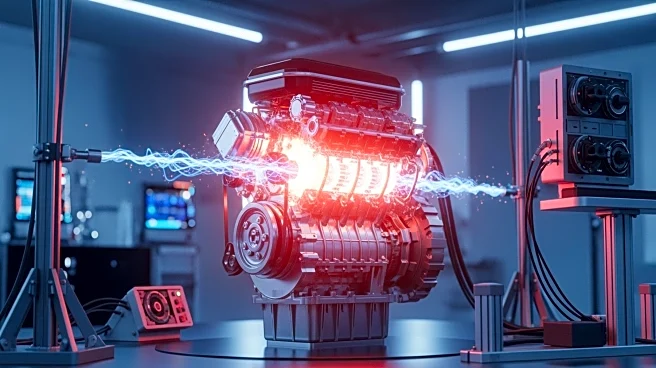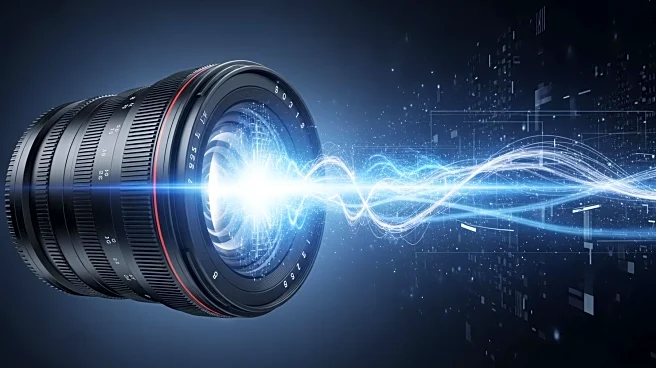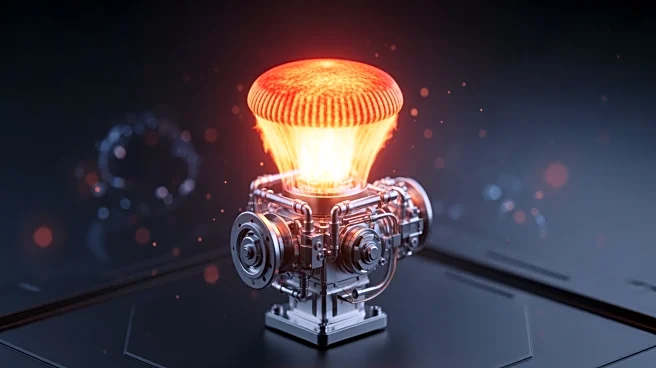What's Happening?
Brian Haidet has developed a method to film laser beams at a speed of 2 billion frames per second, capturing light as it travels. This technique involves recording a one-pixel by one-pixel video repeatedly
to build a full rendering. The project required a complete overhaul of the filming apparatus, including updates to motors, hardware, and software. The experiment visualizes special relativity by showing how light appears to travel faster when approaching the camera compared to when it moves away, due to reflections off fog particles.
Why It's Important?
This breakthrough in high-speed filming technology could have significant implications for scientific research and education. By providing a visual representation of light's behavior at such high speeds, the technique offers new insights into the principles of physics, particularly special relativity. It could also enhance the study of light interactions in various environments, potentially leading to advancements in optical technologies and materials science.
What's Next?
Further development of this filming technique could lead to its application in more complex experiments and educational demonstrations. Researchers may explore ways to increase the resolution and expand the method's capabilities to capture other fast-moving phenomena. The technology could also inspire new approaches to studying light and its properties in different scientific fields.
